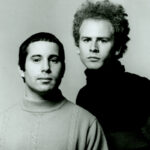“Strange Fruit,” indelibly linked to the legendary Billie Holiday, is more than just a song; it’s a stark and unflinching tableau of American racism. First voiced by Holiday in 1939, this powerful ballad originated from the pen of Abel Meeropol, a white, Jewish high school teacher from the Bronx and a member of the Communist Party. Meeropol conceived it not as a melody initially, but as a searing protest poem, a direct confrontation with the brutal reality of lynching, a heinous act of racial terror predominantly inflicted upon African Americans, primarily in the South but tragically across the United States. He later set his poignant words to music, and alongside his wife and singer Laura Duncan, began performing it in New York’s vibrant cultural scene, even reaching the stage of Madison Square Garden as a raw expression of dissent.
The profound impact of Holiday’s rendition of “Strange Fruit” has been formally recognized through its induction into the Grammy Hall of Fame in 1978. Furthermore, it earned a place among the prestigious Songs of the Century, a list curated by the Recording Industry of America and the National Endowment for the Arts, solidifying its cultural significance and enduring relevance.
Meeropol’s visceral poem, initially titled “Bitter Fruit,” was directly inspired by Lawrence Beitler’s harrowing photograph capturing the 1930 lynching of Thomas Shipp and Abram Smith in Marion, Indiana. This gruesome image fueled Meeropol’s outrage, leading him to publish his poem in 1937 within The New York Teacher, a publication serving the teachers’ union. While Meeropol often sought collaborations with composers to musicalize his poems, including Earl Robinson, he undertook the task of setting “Strange Fruit” to music himself. This self-composed version began to gain traction as a potent protest anthem within New York’s activist circles.
Barney Josephson, a visionary figure and founder of Cafe Society in Greenwich Village, New York – the city’s pioneering integrated nightclub – played a pivotal role in bringing “Strange Fruit” to Billie Holiday’s attention. Accounts vary, with some suggesting Josephson himself discovered the song, while others credit Robert Gordon, Holiday’s show director at Cafe Society, who reportedly encountered it at Madison Square Garden. Regardless of the precise introduction, Holiday debuted “Strange Fruit” at Cafe Society in 1939. She openly confessed to the fear that gripped her each time she sang it, a fear of potential reprisal. Yet, the song’s stark imagery resonated deeply with her, evoking the memory of her father, and compelled her to keep it as a fixture in her performances. Recognizing the song’s gravity, Josephson established specific protocols for Holiday’s performances: it would always be the closing piece, all service would cease beforehand, the room would be plunged into darkness save for a solitary spotlight on Holiday, and no encores would follow. During the song’s somber introduction, Holiday would stand with eyes closed, seemingly lost in a moment of profound reflection, almost prayer.
When Holiday proposed recording “Strange Fruit” to her label, Columbia Records, the response was one of apprehension. The label feared backlash from Southern record retailers and affiliates within their co-owned CBS radio network. Even John Hammond, Holiday’s own producer, expressed reservations. Undeterred, Holiday turned to Milt Gabler, a friend whose Commodore label championed alternative jazz. In a deeply moving audition, Holiday performed “Strange Fruit” a cappella for Gabler, leaving him profoundly moved. Columbia ultimately granted Holiday a one-session release from her contract, allowing her to record the song with Commodore. Frankie Newton’s eight-piece Cafe Society Band was enlisted for the recording session, adding to the song’s already potent atmosphere.
Concerned about the song’s brevity, Gabler requested pianist Sonny White to create an extended introduction, ensuring Holiday’s vocals commenced only after a 70-second instrumental prelude. Gabler then forged a special distribution agreement with Vocalion Records to ensure the song reached a wider audience.
The impact of “Strange Fruit” was immediate and significant. The 1939 record became a commercial success, selling a million copies and evolving into Holiday’s best-selling recording, a testament to its powerful message and artistic merit.
In her autobiography, Lady Sings the Blues, Holiday controversially claimed to have co-authored the music for the poem alongside Meeropol, Sonny White, and arranger Danny Mendelsohn. However, this assertion was firmly refuted by David Margolick and Hilton Als in their definitive work, Strange Fruit: The Biography of a Song. They characterized her account as potentially setting “a record for most misinformation per column inch.” When confronted about these discrepancies, Holiday, whose autobiography was ghostwritten by William Dufty, famously retorted, “I ain’t never read that book.”
Despite the controversy surrounding its authorship and the painful subject matter it addresses, “Strange Fruit” has been interpreted and performed by numerous artists across genres, a testament to its enduring power and universal themes. In October 1939, Samuel Grafton of The New York Post eloquently captured the song’s significance, writing, “If the anger of the exploited ever mounts high enough in the South, it now has its ‘Marseillaise.’” “Strange Fruit”, this Song Strange and haunting, remains a crucial piece of musical history, a stark reminder of a dark chapter in American history, and an enduring call for justice and equality.


